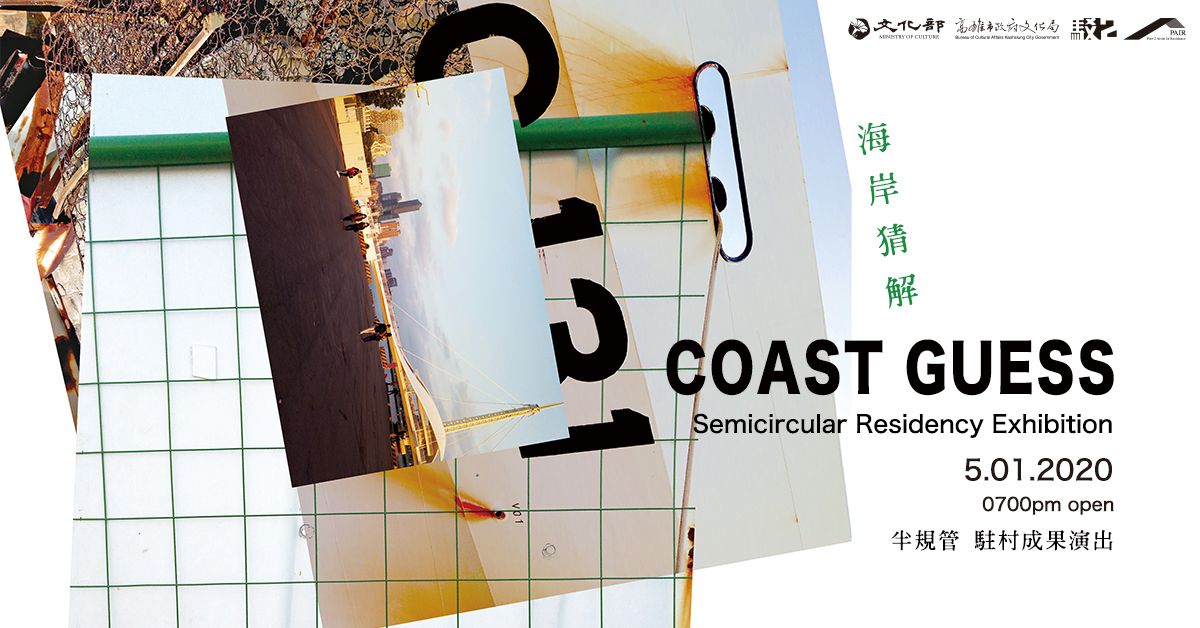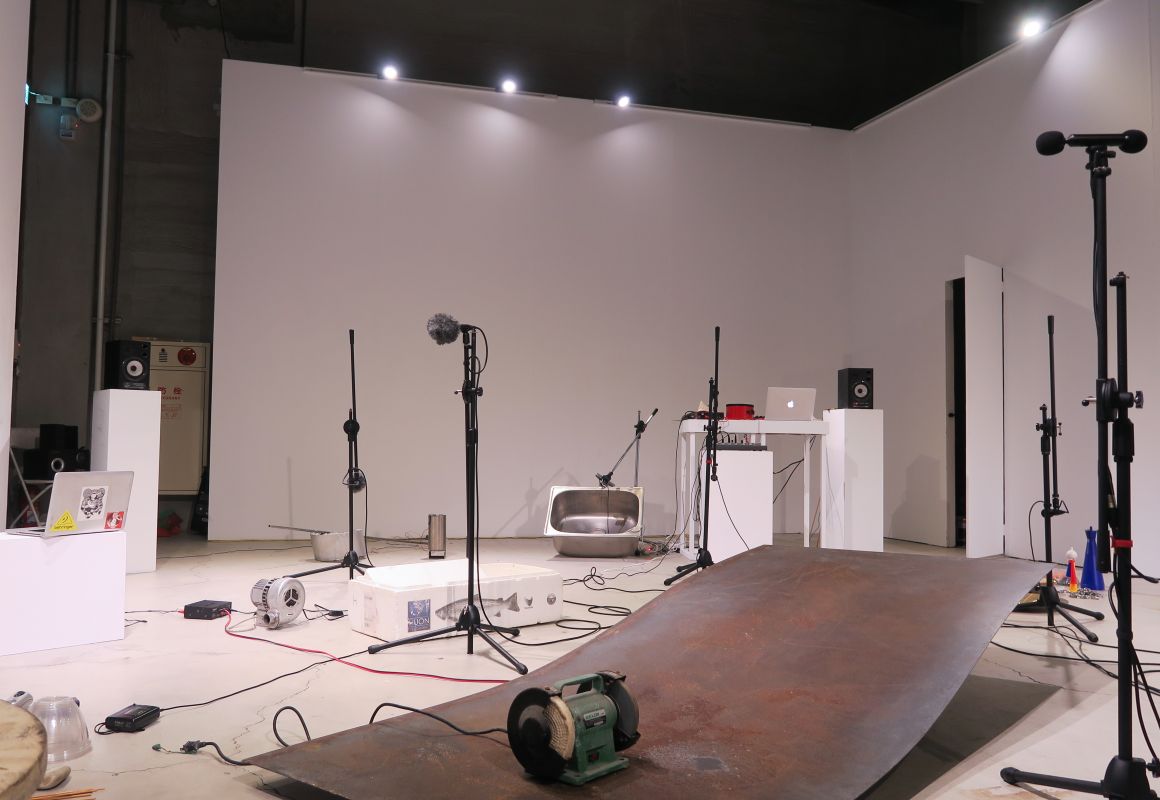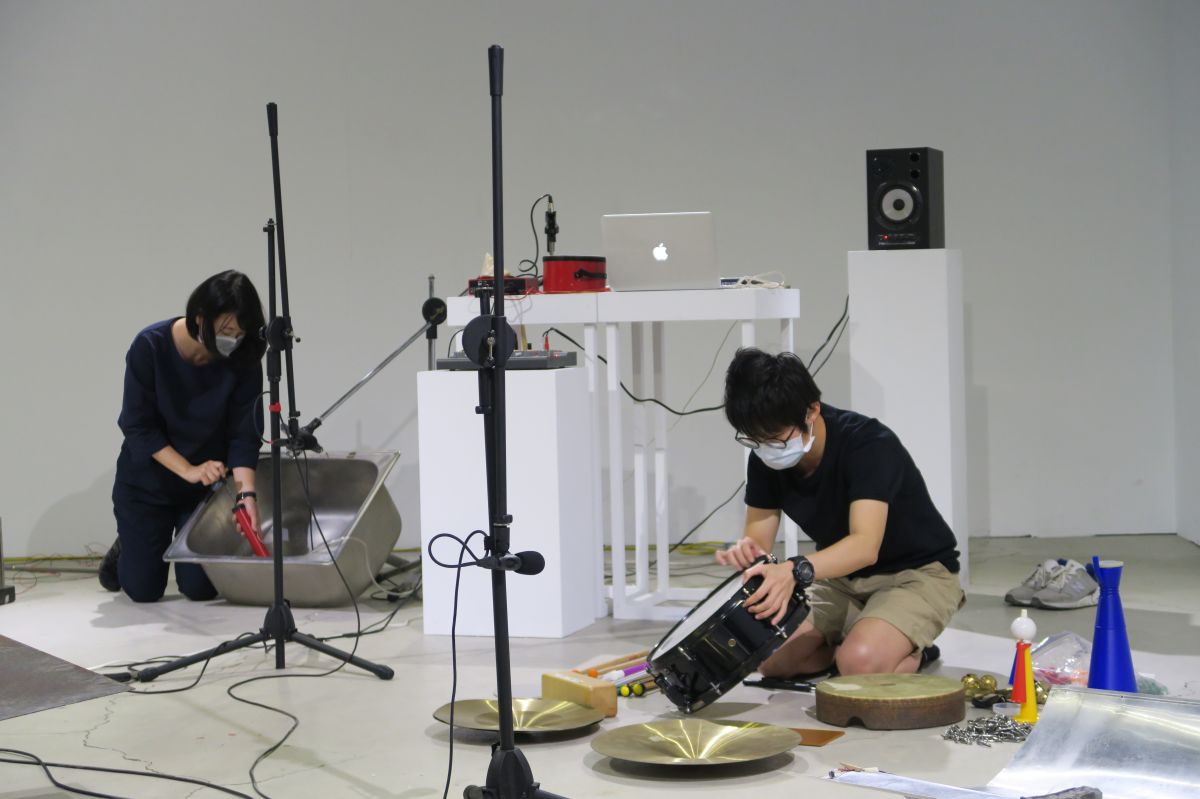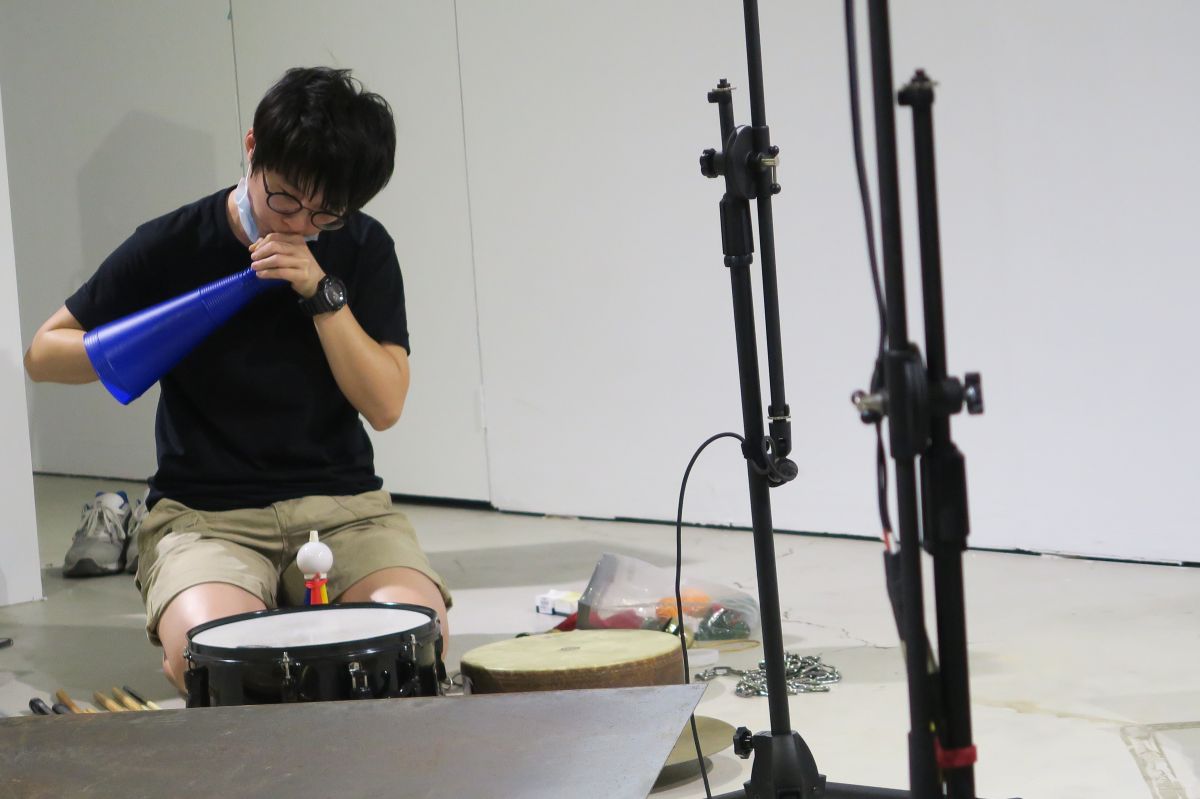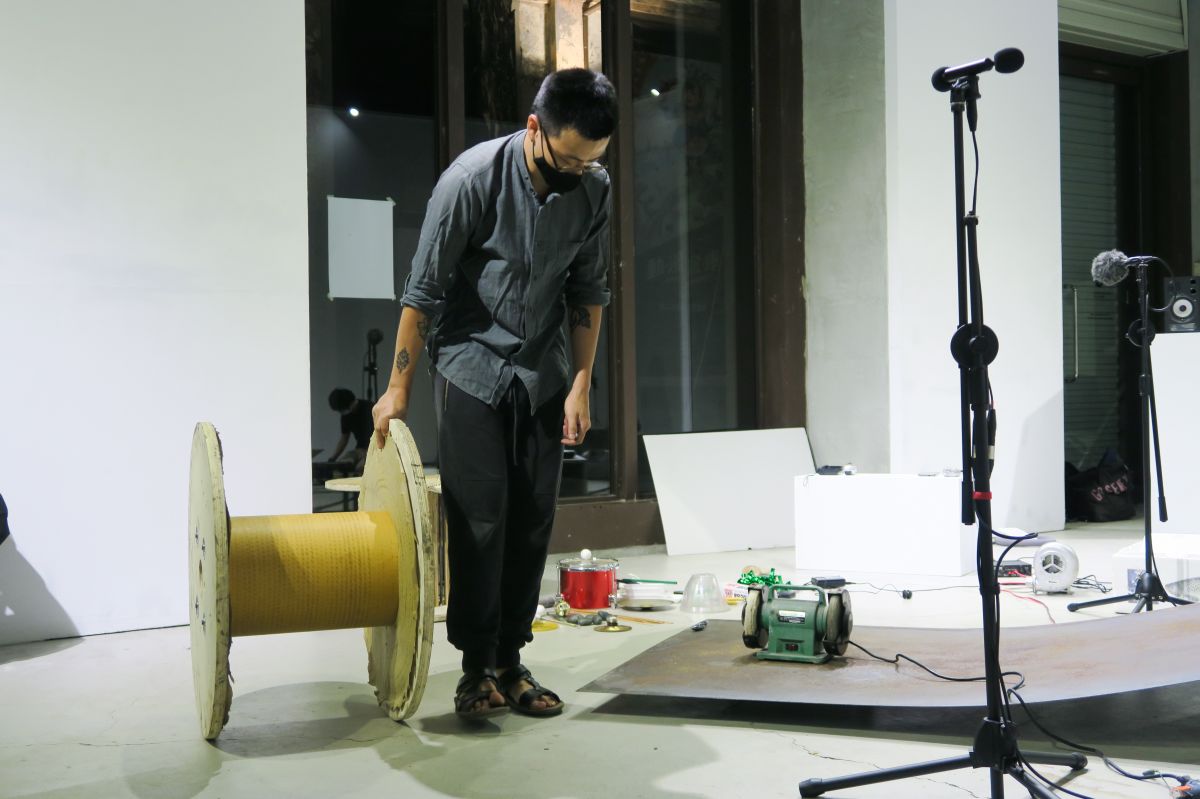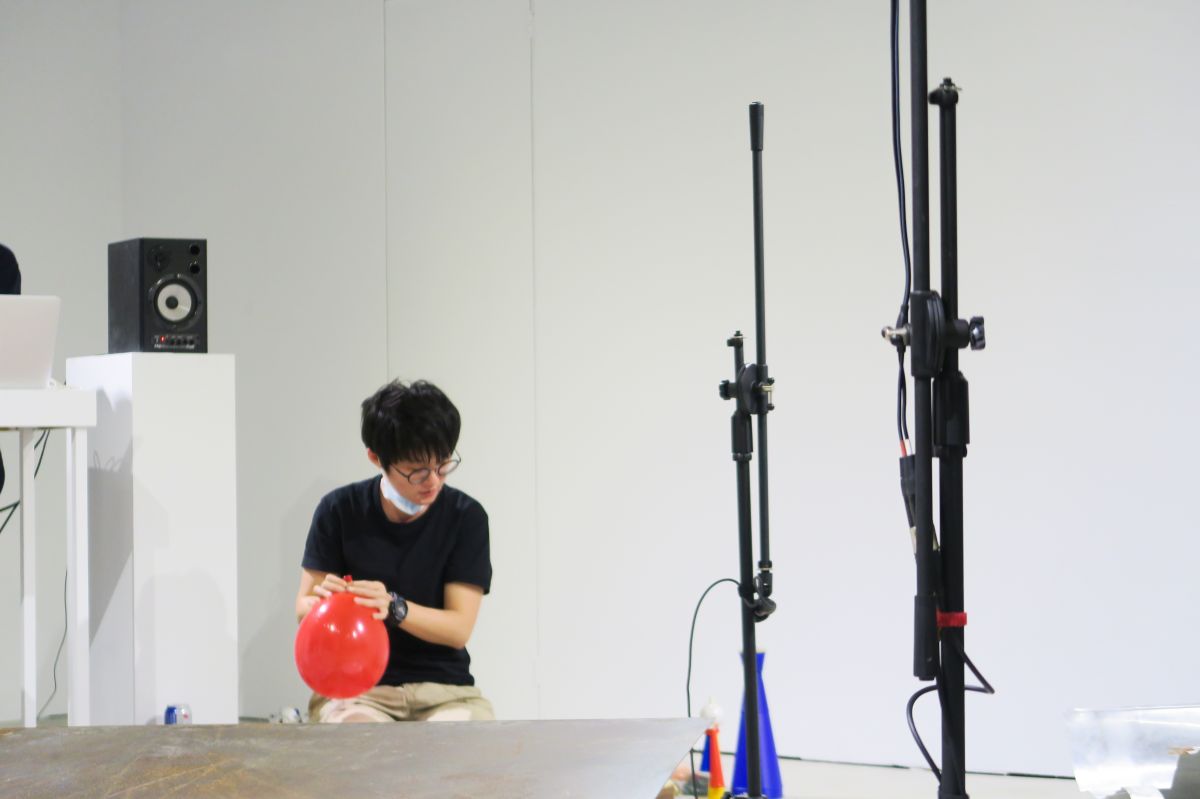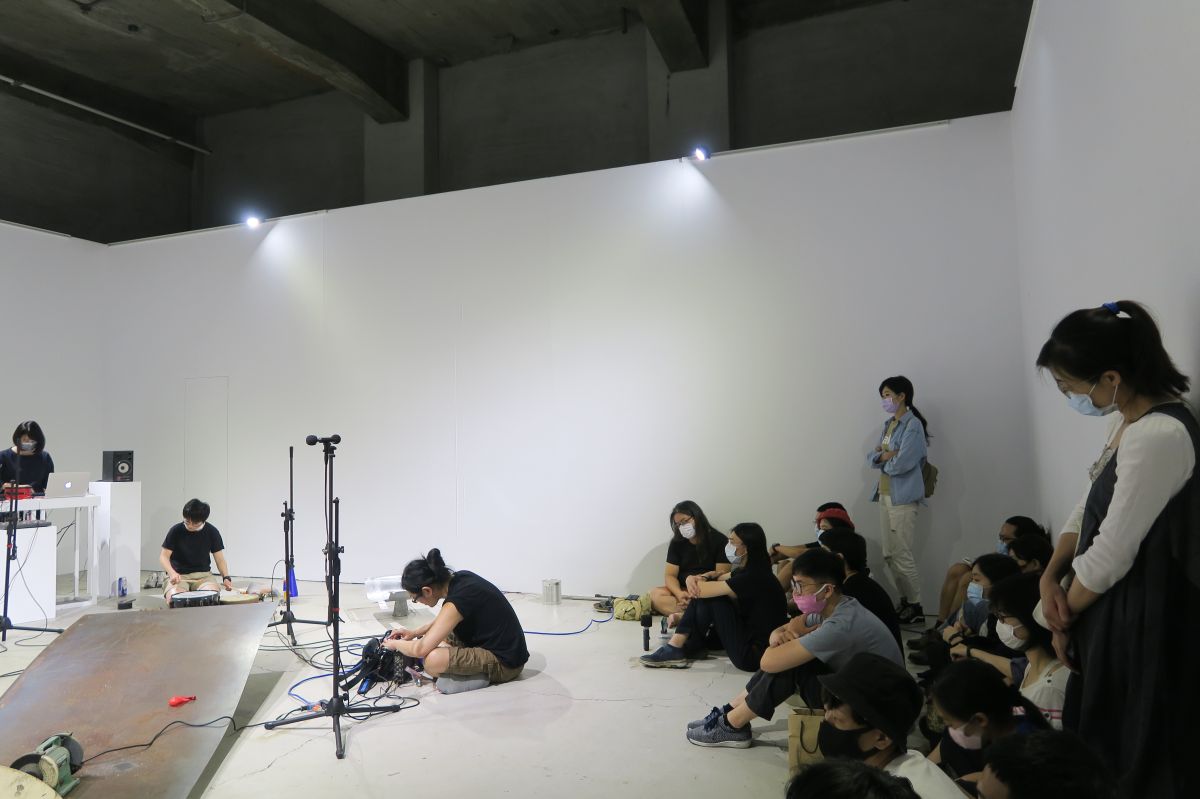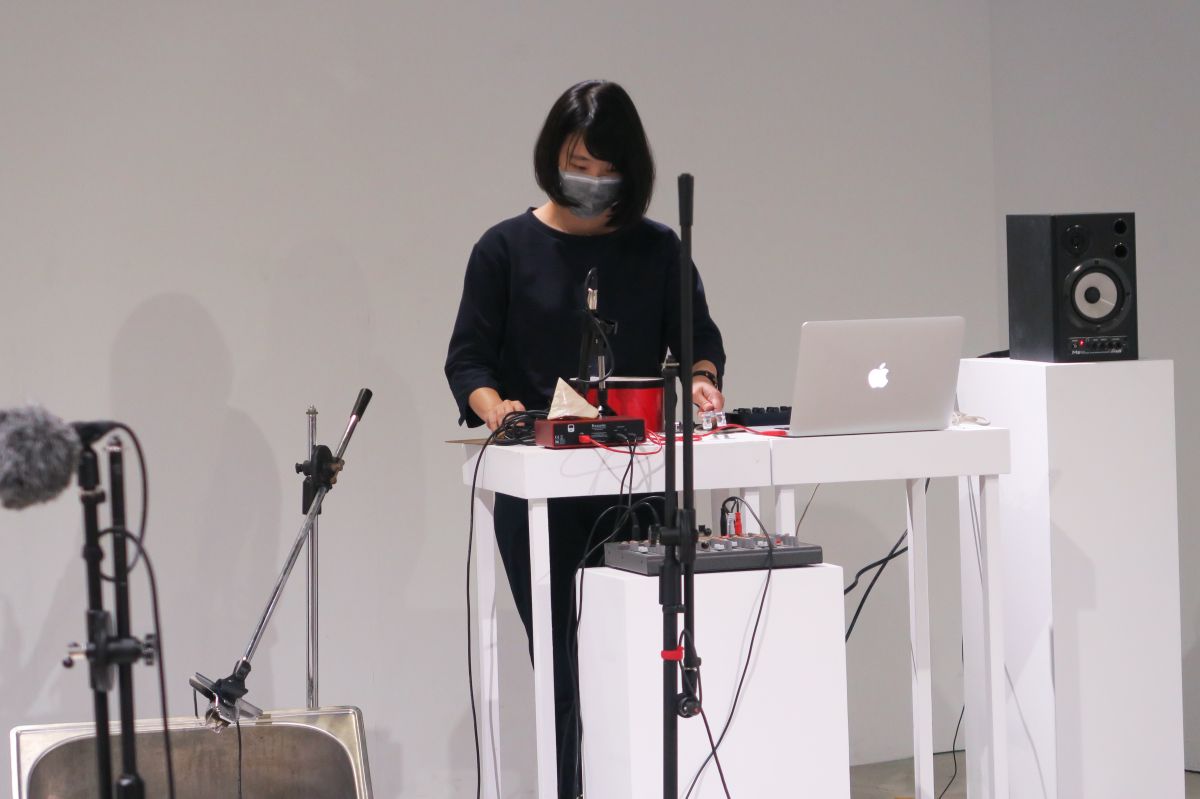Location: C8-8 Warehouse, Dayi Area
Time: 2020/05/01
▍2020/5/1
▍19:30- 20:30
▍C8-8 Warehouse, Pier-2 Art Center
▍Performers
– Yung-Chih Hsueh / percussion, objects
– Wan-Chien Cheng / flute, laptop, objects
– Fang-yi Liu / objects
Semicircular is a musician/sound artist group in Taiwan, founded by Hsueh Yung-Chih and Cheng Wan-Chien in spring 2016. The duo became a trio in 2018 with the addition of Liu Fang-Yi. Featuring a system consisting of people, objects, electronics, sounds, experiments, and concepts, the group shows itself through expression between music and non-music domains. Combining improvisational performances with diverse media and the traits of different fields (languages, social issues, culture and others), it keeps its focus on the meaning and significance of everything as well as presents and transforms them through performances or in any other possible forms.
▍Coast Guess
We all have memories and experiences related to Yancheng District and Hamasen, as some of us have studied in Kaohsiung and the others are native to Kaohsiung and have never left this city. Yet, when we joined Pier 2's artist-in-residence program and began to explore the coastal area, we suddenly felt that we only had a limited understanding of the coast as it seemed somewhat foreign to us. Although we acquired bits of clues and data by consulting relevant books, interviewing residents, as well as conducting field observation and sound recording, the Port of Kaohsiung is still like a riddle lying ahead of us, just as it has been lying at the city's edge for a century.
"The city's edge" can probably account for the unusual feeling of citizens in other parts of the city when they visit the port. A clear boundary, beyond which the cityscape is nowhere to be found, is absolutely an uncommon scene to an urban dweller, a scene that is a wide, huge opening with countless vessels on the boundless sea. There are ships which are colossi made of steel, and swaying rafts that seem unsafe to ride on. Such means of transportation do not belong on solid land; they belong on water, the unknown realm that seems to defy gravity and is opaque; even light beams can barely stay still upon it. Even more unknown is the sea that we know exists somewhere farther and out of our sight, linking to the immense world and being as abstract as one's thought. A common scene by the port is a long yellow line on the ground that reads, "DO NOT CROSS." Everyone is on the other side and will by no means cross the line that separates the city and the port; those who have crossed over surely were not caught doing so. People were also separated; even couples and friends looked alone. They were all overlooking the sea, probably imagining they were swimming freely or being engulfed by it. No one talked, and the silence would not break until later.
The city's edge, the sea's edge, the beach, the intertidal zone, the land along the port, aroused memories. The point where the land and the sea meet is characterized by change; the coming and receding tides bring something and take away something, like the tide of time. In these comings and goings, there's always something left or not yet washed clean. Things and information from different times and places are mingled here. Next to the "metal hardware street", where the shipbreaking industry had experienced its fall a long time ago, is the Pier-2 Art Center. By the rail tracks on the reclaimed land that were built to transport sugar to the port, parents and children from many households were flying kites or watching. When we saw that, "displacement" was the only word that came to our minds. What about the scenes not before our eyes? The testing station for the export of pork products might only remain as memories and reminiscence of elderly people conversing in the park where the station used to be. Back then, the station may have been filled with swine oinks. Sounds often are not preserved, but will only alter continuously and disappear immediately. We can only count on people's memories and the may-not-be-correct copy in the audio recording equipment. When time is taken as a measurement, everything that is subject to change will end up like this, transient.
It seems that a Coast Guard Administration ship, with large "CG" and digits printed on its bow, is always anchored by the Dayi Warehouse Cluster. Obviously, "CG" is short for "Coast Guard." When we brainstormed for our exhibition title, we were inspired by Coast Guard and came up with "Coast Guess", since guessing is the only means to understand the coast.
